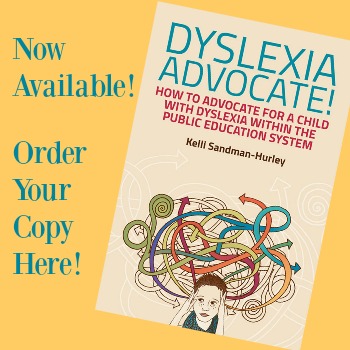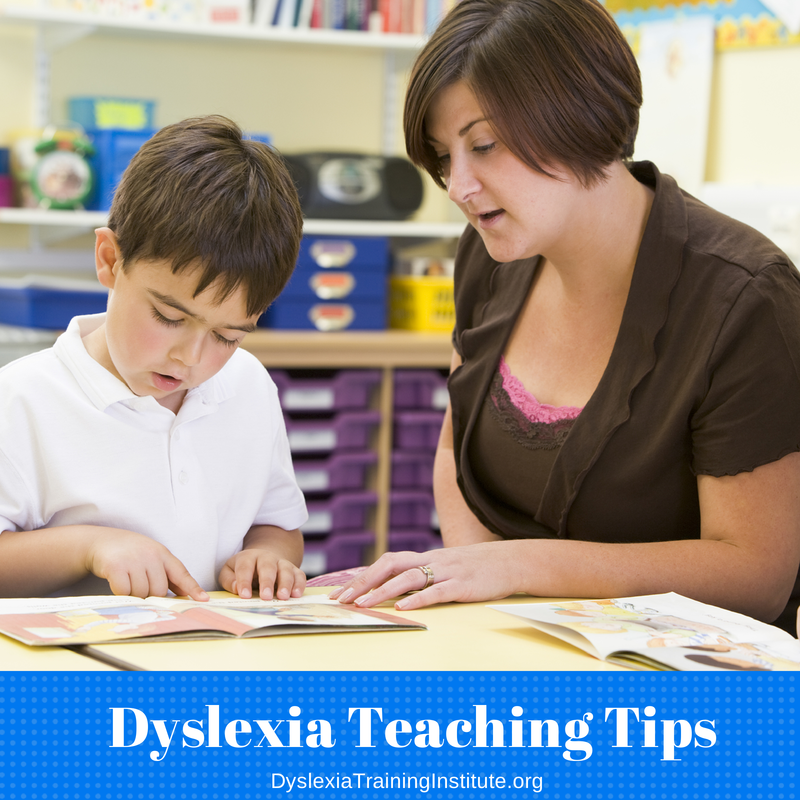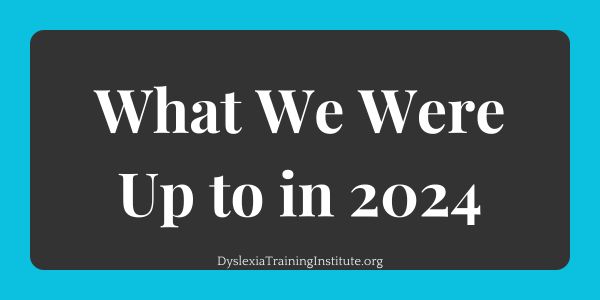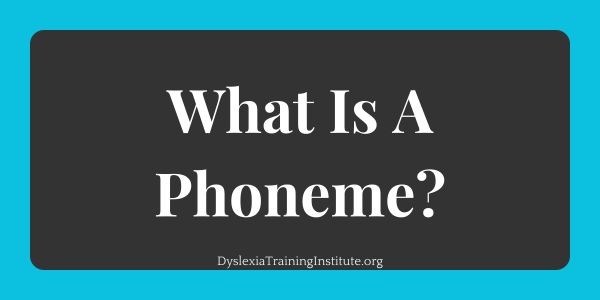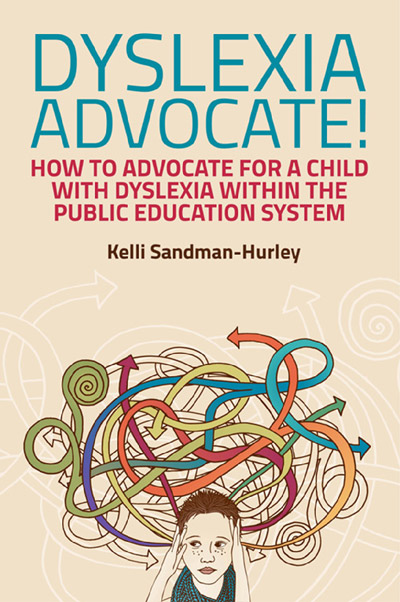The struggle is real for parents of students with dyslexia who are tirelessly trying to get public schools to acknowledge the existence of dyslexia and then understand and/or acknowledge what an appropriate remediation is for a student with dyslexia.

In most cases, parents often look to IDEA to use as a reference point in school meetings to support their requests and this often includes using the word appropriate when describing a remediation approach. The problem is that when Congress enacted IDEA they did not define what is appropriate and instead left that determination up the school personnel, but why?
So, how is the concept of appropriate defined for students with dyslexia?
Parents and caregivers of school-age students with disabilities, and in particular, dyslexia, often find themselves questioning the appropriateness of the services provided by the public school system to their children. This uncertainty arises when the student fails to make progress that would be expected of a student with average to above-average intelligence and who only struggle with reading and spelling, which is the description of a student with dyslexia.
When this happens the parents request to have their child assessed and attend an Individualized Education Program (IEP) with a team of professionals from the school and the district. The purpose of the meeting is to use the data from the assessment to determine the student’s strengths and weaknesses and create a plan that is reasonably calculated so that the student will make the progress she needs to make in order to access the curriculum. At the heart of these meetings, and what tends to be the most debated topic during said meetings, is determining what is appropriate for that student.
However, in the case of students with dyslexia, a team who agrees on what is appropriate is rare.
Popular opinion is that appropriate instruction is structured, multisensory and explicit.
The one thing a child with dyslexia absolutely does not need is the ‘eclectic’ approach to teaching reading, which is a little bit of this and a little bit of that. The English writing system is a rules-based language that makes sense when the underlying structure is explicitly taught and studied. When a child with dyslexia is taught the structure of the language with a structured, multisensory, and explicit approach, they almost always improve their reading and spelling.
IDEA: How did we get here?
Students with dyslexia are just one of thirteen disability categories of students who are currently afforded educational rights by the Individuals with Disabilities Education Act. There are three cases that played significant roles in the history of the creation of IDEA and are described below.
Watson v. City of Cambridge (1893)
The Massachusetts Supreme Court upheld the “expulsion of a student solely due to poor academic ability” on the ground that the student was too “weak-minded” to profit from instruction. Although this was a failed attempt to help students with disabilities, it was the first legal effort to provide them a public education.
Brown v. Board of Education (1954)
The Supreme Court ruled that American state laws establishing racial segregation in public schools are unconstitutional, even if the segregated schools are otherwise equal in quality. Although this case addressed the denial of education rights on the basis of race, it provided the impetus to begin the conversation about education rights for all students, including those students with disabilities.
PARC v. Commonwealth of Pennsylvania and Mills v. Board of Education, DC(1971)
The Pennsylvania Association for Retarded Children (PARC) sued the Commonwealth of Pennsylvania for a state law that allowed public schools to deny education to certain children, namely those who had not “attained a mental age of 5 years”. This law had been consistently used by the state to deny education to students considered too burdensome to integrate into school and classroom environment.
In this case, the word appropriate is found in the following statement: It is the Commonwealth’s obligation to place each mentally retarded child in a free, public program of education and training appropriate to the child’s capacity.” According to the Amicus Curiae brief submitted for the Endrew F.case the word appropriate, in the context of students with disabilities originated with the PARC case.
Individuals With Disabilities Education Act (1975)
On November 29, 1975, President Gerald Ford signed the Education for All Handicapped Children Act, currently known as the Individuals with Disabilities Education Act (IDEA). The stated purpose of the PL 94-142 ,IDEA (Formerly ESEA): “to assure that all children with disabilities have available to them…a free appropriate public education which emphasizes special education and related services designed to meet their unique needs”
- “to assure that the rights of children with disabilities and their parents…are protected”
- “to assist States and localities to provide for the education of all children with disabilities”
- “to assess and assure the effectiveness of efforts to educate all children with disabilities”
The Individuals with Disabilities Education Act (IDEA) is a four-part (A-D) piece of legislation that ensures students with a disability are provided with a Free Appropriate Public Education (FAPE) that is tailored to their individual needs. IDEA (PL 14-149) was previously known as the Education for All Handicapped Children Act (EHA) from 1975 to 1990.
In 1990 Congress reauthorized EHA and changed the title to IDEA. Part B of IDEA is most relevant for students with dyslexia and is composed of six main elements. These six elements are:
- Individualized Education Program (IEP)
- Free and Appropriate Public Education (FAPE)
- Least Restrictive Environment (LRE)
- Appropriate Evaluation
- Parent and Teacher Participation,
- Procedural Safeguards.
Free and Appropriate Education (FAPE)
Every child is entitled to a Free and Appropriate Education (FAPE). The free in FAPE is an education that is at public expense, under public supervision and without charge. The appropriate in FAPE means that the services must be reasonably calculated to achieve educational benefit (as described in Rowley. The Public is FAPE means that the child will be educated in the least restrictive environment (LRE). The education in FAPE is the instruction and services that the child receives.
FAPE must meet the following standards:
(A) have been provided at public expense, under public supervision and direction, and without charge;
(B) meet the standards of the State educational agency;
(C) include an appropriate preschool, elementary school, or secondary school education in the State involved; and
(D) are provided in conformity with the individualized education program required under section 1414(d) of this title.
20 U.S.C. § 1401(9) (2010).
Appropriate ‘defined’ in IDEA
Although there is not a specific description of what an appropriate education is in the form of an identification of a specific program or strategies, the IDEA does define it the following way:
An appropriate education may comprise of education in regular classes, education in regular classes with the use of related aids and services, or special education and related services in separate classrooms for all or portions of the school day. Special education may include specially designed instruction in classrooms, at home, or in private or public institutions, and may be accompanied by related services such as speech therapy, occupational and physical therapy, psychological counseling, and medical diagnostic services necessary to the child’s education.
An appropriate education will include:
- education services designed to meet the individual education needs of students with disabilities as adequately as the needs of non-disabled students are met;
- the education of each student with a disability with non-disabled students, to the maximum extent appropriate to the needs of the student with a disability;
- evaluation and placement procedures established to guard against misclassification or inappropriate placement of students, and a periodic reevaluation of students who have been provided special education or related services; and
- establishment of due process procedures that enable parents and guardians to:
- receive required notices;
- review their child’s records; and
- challenge identification, evaluation, and placement decisions.
Education Services Must Meet Individual Needs
IDEA also states:
To be appropriate, education programs for students with disabilities must be designed to meet their individual needs to the same extent that the needs of non-disabled students are met. An appropriate education may include regular or special education and related aids and services to accommodate the unique needs of individuals with disabilities.
One way to ensure that programs meet individual needs is through the development of an individualized education program (IEP) for each student with a disability. IEPs are required for students participating in the special education programs of recipients of funding under the IDEA.
The quality of education services provided to students with disabilities must equal the quality of services provided to non-disabled students. Teachers of students with disabilities must be trained in the instruction of individuals with disabilities. Facilities must be comparable, and appropriate materials and equipment must be available.
In 1995 Congress reauthorized IDEA and added the following phrase to describe how reading should be taught, which could be interpreted to be what they deem as appropriate: (II) scientifically based reading instruction.
IDEA Supreme Court Cases
In many instances, the school interprets the parents request as a request for the ‘best’ intervention instead of what is appropriate to provide ‘some benefit’ which was the standard set by Rowley v. Board of Education (1980). The schools are only mandated to provide what is appropriate, not what is best.
The Supreme Court, in their landmark decision in Rowley, stated that schools only needed to provide a floor of opportunity to disabled students and left the definition of appropriate up to interpretation by schools and hearing officers, and merely stated that the student is entitled to an education that is:
An “appropriate education” could mean an “adequate” education that is, an education substantial enough to facilitate a child’s progress from one grade to another and to enable him or her to earn a high school diploma. An “appropriate education” could also mean one which enables the handicapped child to achieve his or her full potential. Between those two extremes, however, is a standard which I conclude is more in keeping with the regulations, with the Equal Protection decisions which motivated the passage of the Act, and with common sense. This standard would require that each handicapped child be given an opportunity to achieve his full potential commensurate with the opportunity provided to other children.
IDEA states that:
The “reasonably calculated” qualification reflects a recognition that crafting an appropriate program of education requires a prospective judgment by school officials. The Act contemplates that this fact-intensive exercise will be informed not only by the expertise of school officials but also by the input of the child’s parents or guardians. Any review of an IEP must appreciate that the question is whether the IEP is reasonable, not whether the court regards it as ideal.
Chevrolet or Cadillac?
In 1993 in Doe V. the Board of Education of Tullahom Schools (6th circuit) made the now-famous comparison of the Chevrolet and Cadillac when it stated, “The Act requires that the Tullahoma schools provide the educational equivalent of a serviceable Chevrolet to every handicapped student. Appellant, however, demands that the Tullahoma school system provide a Cadillac solely for appellant’s use. We suspect that the Chevrolet offered to the appellant is, in fact, a much nicer model than that offered to the average Tullahoma student. Be that as it may, we hold that the Board is not required to provide a Cadillac and that the proposed IEP is reasonably calculated (aka appropriate) to provide educational benefits to appellant, and is therefore in compliance with the requirements of the IDEA.”
An Amicus Curiae 13 which was submitted in the case of Andrew F. weighed in on the use and meaning of the word appropriate:
The “merely * * * more than de minimis” test is not compatible with the ordinary meaning of “appropriate.” No parent or educator in America would say that a child has received an “appropriate” or a “specially suitable” or “proper” education “in the circumstances” when all the child has received are benefits that are barely more than trivial. That is particularly true when a child is capable of achieving much more.
Taken to its logical conclusion, the “merely more than de minimis” test could lead to results that Congress plainly did not intend when it required an “appropriate” education.
At this point, it is important to consider the intent of Congress and what was written. A review of Congressional testimony during the reauthorization of IDEA in 1994 revealed little insight into what they intended appropriate to mean in practice.
Most recently, in 2017, Endrew F. vs. Douglas County School District the Supreme Court (Justice Roberts writing for the unanimous court) changed the standard of appropriate from Rowley to:
A school must offer an IEP reasonably calculated to enable a child to make progress appropriate in light of the child’s circumstances (emphasis added). In clarifying the standard, the Court rejected the “merely more than de minimis” (i.e. more than trivial) standard applied by the Tenth Circuit. In determining the scope of FAPE, the Court reinforced the requirement that “every child should have the chance to meet challenging objectives.
&
“[a] student offered an educational program providing merely more than de minimis progress from year to year can hardly be said to have been offered an education at all…The IDEA demands more.”
Even though the phrase in light of the child’s circumstances was added, the court went on to make the following statement that seems to perpetuate the ambiguous definition of what is appropriate:
We will not attempt to elaborate on what ‘appropriate’ progress will look like from case to case. It is in the nature of the Act and the standard we adopt to resist such an effort: The adequacy of a given IEP turns on the unique circumstances of the child for whom it was created. This absence of a bright-line rule, however, should not be mistaken for ‘an invitation to the courts to substitute their own notions of sound educational policy for those of the school authorities which they review.’
The court also stated:
While Rowley declined to articulate a standard to evaluate the adequacy of the education provided under the Act, the decision and the statutory language point to a general approach: To meet its substantive obligation under the IDEA, a school must offer an IEP reasonably calculated to enable a child to make progress appropriate in light of the child’s circumstances.
As a result of Endrew F., each child’s educational program must be appropriately ambitious in light of his or her circumstances, and every child should have the chance to meet challenging objectives rendering the de minimis standard no longer appropriate. However, it is still left up to the schools to determine what is appropriate. Waterstone (2017) stated that parents will still need to be prepared to defend the intervention they are seeking based on their child’s circumstances. The court’s refusal to define appropriate is not explicitly stated but can be interpreted from the phrase ‘in light of the child’s circumstances’ which means that it has to be individualized to each child. Therefore, the term appropriate cannot be defined without a connection to a particular student’s academic profile. Which lets credence to the motto that one size does not fit all.
With the Supreme Court’s decision, the onus of determining appropriateness falls on the lower courts and IEP team members on a case by case (individual) basis. In an attempt to refine what we mean by appropriate, Weber (2011) defines appropriate services as an IEP that contains appropriate goals, a research-based intervention, a program that provides benefit to the student in light of the student’s abilities. However, the interpretation of what is appropriate varies from court decision to court decision and those decisions and the language in the decisions rarely make their way to the IEP meeting and appropriateness is still an ambiguous term left somewhat undefined by the Supreme Court and Congress.
Legal issues often arise because of the meanings of words and whether those words fit the situation that Congress intended for them. The philosophical idea of direction of fit might also be at play in the discrepancy between what parents think is appropriate and what the school thinks is appropriate. It is possible that parents use words appropriate to fit the description of the program they think will be effective and the school uses the word appropriate to fit whichever program they have available to them.‘Whatever Congress meant by an “appropriate” education, it is clear that it did not mean a potential-maximizing education (Amicus Curiae, Endrew F).’
While it remains unclear what the intention of Congress was when it decided to use the word ‘appropriate’, what is clear is that the courts have opted not to define it in order to make sure that what the student receives is appropriate ‘in light of his circumstances’. In fact, it may actually be the term “in light of his circumstances’ that deserves the analysis and not the word appropriate.
Parents and advocates often believe that once the child is diagnosed with dyslexia, what becomes appropriate is a specific program (which was described in the dyslexia section) and they request the program by name. However, dyslexia does present differently in each and every student what might be appropriate varies from case to case, which supports the decision by Congress and the Supreme Court to stop short of defining it. It turns out that what is appropriate is actually what is individualized.




